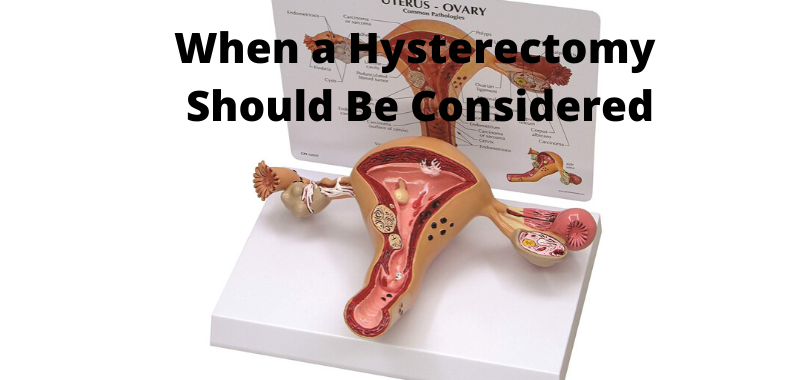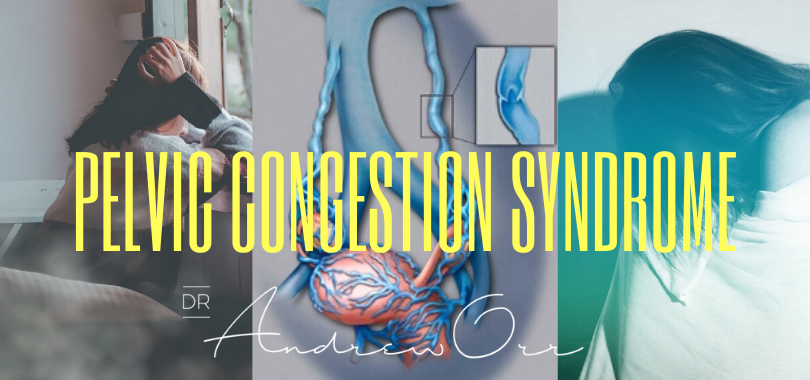Millions of women world-wide suffer from chronic pelvic pain. One of the causes of chronic pelvic pain is a condition called Pelvic Congestion Syndrome and it is not often talked about. I thought it was important to share this information to bring more awareness to this syndrome.
Pelvic congestion syndrome does share many of the same symptoms of endometriosis and adenomyosis and it important to have proper differential diagnosis and rule other causes of pelvic pain out first. Sometimes the varicose veins that cause pelvic congestion syndrome can be present alongside endometriosis and adenomyosis, or other pelvic issues.
In the past, a diagnosis of chronic pelvic pain left many women frustrated with few treatment options and a lack of available resources. Their doctors were often left perplexed, despite the endless negative laboratory test and imaging data as well as inconclusive consultations obtained.
In the last 10 years, improved medical understanding and increased awareness have lessened the confusion surrounding this condition and its distinct association with pelvic congestion syndrome (PCS). There are now more minimally invasive surgical solutions which give affected patients more treatments choices as well.
So what is Pelvic Congestion Syndrome (PCS)?
Pelvic congestion syndrome (PCS) is a chronic condition that occurs in women when varicose veins form below the abdomen within the pelvic region. Pelvic congestion is just like the varicose veins that some women have in their legs, but it affects the veins of the pelvis. Blood backs up in the veins, making them become enlarged and engorged. Pelvic congestion can also cause chronic pelvic pain in some women.
What are the symptoms of Pelvic Congestion Syndrome?
The main symptom of pelvic congestion syndrome is pelvic pain that lasts at least 6 months. The pain may be a heavy or aching feeling. Or the pain may be sharp. Usually the pain is only on one side, usually the left side. At times you may feel it on both sides. The pain is often worse at the end of the day. If PCS occurs in pregnancy it often first starts during or after a pregnancy. It may worsen after a later pregnancy.
Symptoms of Pelvic Congestions Syndrome can include the following.
- Pain starts 7-10 days before your period
- Pelvic pain is worse when you sit or stand
- Lying down relieves pelvic pain
- Varicose veins around the vulva, buttocks, and legs
- Abnormal vaginal discharge
- Swelling of the vagina or vulva
- Tenderness of the abdomen
- Pain during sex
- Dysmenorrhea (painful menstruation)
- Abnormal bleeding during menstruation
- Backache
- Depression
- Fatigue
- Increased urination
- Irritable bowel symptoms
- Hip pain
- Lower back pain
- Aches in your legs
The syndrome often causes a constant dull pain in the pelvic area that is said to worsen at different times of the cycle and in different situations. Experts believe it can be the source of pain in up to 30% of women who have chronic pelvic pain.
How is at Risk?
It’s more likely to develop in women who have previously given birth, but it can be found in women who have not had children. It is also hereditary so if someone in the family has it, you may be at a higher risk of having it.
What Are The Causes of PCS?
It is still not fully understood what the cause of pelvic congestion syndrome is. There may be multiple factors and causes.
Enlarged veins in the pelvis seem to play a major role. These large veins do play a major role in those that have chronic pelvic pain, but many women have enlarged veins and no symptoms.
Pregnancy may increase the risk for pelvic congestion syndrome. This is because veins enlarge during pregnancy to support the increased blood flow. This can permanently enlarge the veins and lead to symptoms.
Just like endometriosis and adenomyosis, hormones may also play a role in pelvic congestion syndrome. It is though that estrogen may play a big part of this by making veins wider (dilates). We do know that estrogen does drive disease inflammatory states. We also know that PCS is less common after menopause when estrogen levels tend to be lower.. Other hormones may also cause veins to grow wider and cause symptoms.
Excess weight and increased body fat may also cause increased inflammation and estrogenic response that leads to pelvic congestion syndrome.
Other factors such as dietary and lifestyle factors may exacerbate this condition as well.
How is it diagnosed?
PCS can be quite difficult to diagnose, and will need a multimodality approach to be able to firstly diagnose this properly and then apply appropriate treatment. PCS often requires a multidisciplinary approach because the differential diagnosis is quite long and varied. As mentioned before, some of the symptoms are the same as other inflammatory conditions such as endometriosis and adenomyosis. Multiple diagnostic procedures are needed to eliminate other possible causes for your symptoms. These procedures can include:
- Ultrasound
- Laparoscopy (keyhole surgery)
- CT scan
- MRI scan
- Venogram
Ultrasound is often preferred as the first step in diagnosing PCS, as it is possible to detect the varicosities as well as assess the blood flow. The only problem with ultrasound is that is that it may not always pick the varicosities up.
MRI may be needed, but even then, laparoscopy is the only procedure to definitely diagnose this condition. I often explain to women that if they have been in pain for a long time, the best option is a laparoscopy. This can also be used to exclude other pelvic pathology and also check to see if there is endometriosis etc too. Sometimes the varicosities may need to be tied off surgically as well and can be done via laparoscopy. Laparoscopy is the gold standard investigation of the pelvis and why it is the best option.
There may need to be input from other health professionals and modalities such as gynaecologists, anaesthesiologist, gastroenterologist, advanced trained laparoscopic surgeon, neurologist, haematologist, oncologist, psychiatrist, and urologist or urodynamic specialist may also be necessary. If someone sees a lot of this syndrome then they will be able to differentiate this without the need of involving too many other areas of medicine, but all other pathology and disease states do need to be carefully ruled out first.
When I help women with PCS, I have a very specialised team of healthcare professionals I work with that see this syndrome often and know what to look for very quickly and promptly. This is why it is very important to see the right people who know about these particular areas of women’s health conditions.
Treatments for Pelvic Congestion Syndrome
Treatment for pelvic congestion syndrome is usually aimed at reducing and alleviating symptoms. Unfortunately, like endometriosis, there is no definite cure for the condition, and it can be challenging to treat if you don’t get to see the right healthcare practitioner, or healthcare team.
There are medications available to help relieve symptoms of PCS and these can include:
- NSAIDs (nonsteroidal anti-inflammatory drugs)
- chronic pain medications (such as gabapentin plus amitriptyline)
The most successful treatment currently is a minimally invasive surgical procedure called pelvic vein/ovarian vein embolization (PVE/OVE). This procedure blocks off the faulty varicose veins so that they can no longer enlarge with blood, thereby relieving the pain. that are believed to be the source of pain.
Embolization (PVE/OVE) offers a safe, effective, minimally invasive treatment option that is less expensive to surgery and less invasive. It is an outpatient hospital procedure which requires only conscious sedation. Once the procedure is performed, you can return home a few hours later the same day. Medical literature shows that the procedure provides complete or partial relief in approximately 90% – 95% of the cases. As with any procedure, there are risks, and not all women may be appropriate for this treatment option.
A laparoscopy may still be needed to definitely diagnose the varicose veins first, before embolization can be performed. This is why diagnosis and treatment of PCS does require a step by step multimodality approach. This is something that needs to be clearly understood.
Outlook
PCS isn’t a condition that is life threatening, but it does have the potential to significantly affect your quality of life. Symptoms such as chronic pain, pain during sexual intercourse, and dysmenorrhea can lead to a decrease in physical activity, loss of function, and depression. It can make daily life very hard and make it difficult to function in your personal and work life.
A diagnosis does not necessarily mean you will be affected to this extent and PCS varies greatly in terms of severity for each person. Not all women with PCS will have their daily life affected and some do not get pain at all.
The good thing is that there are treatments available to minimize the symptoms and help sufferers cope with this condition. It is important that you talk to your healthcare practitioner if you do have any of the symptoms of PCS.
It’s also important to talk to your healthcare practitioner about counseling, if needed, to help you cope with the significant chronic pain that can go along with having PCS. Chronic pain can impact on an emotional and psychological level and this can then lead to further exacerbation of pain. Many people just do not realise the impact the stress and emotions and mood disorders can have on pain conditions.
Last word
If you do have chronic pelvic pain and need assistance with diagnosis and management please give my friendly staff a call and ask how I may be able to assist you. I also work in with a good network of healthcare professions to help my patients get the best care possible. My motto is No Stone Left Unturned and I apply this to everyone that comes to see me for assistance with their health condition.
Regards
Andrew Orr
-No Stone Left Unturned
-Master of Women’s Health Medicine
-The Women’s Health Experts

